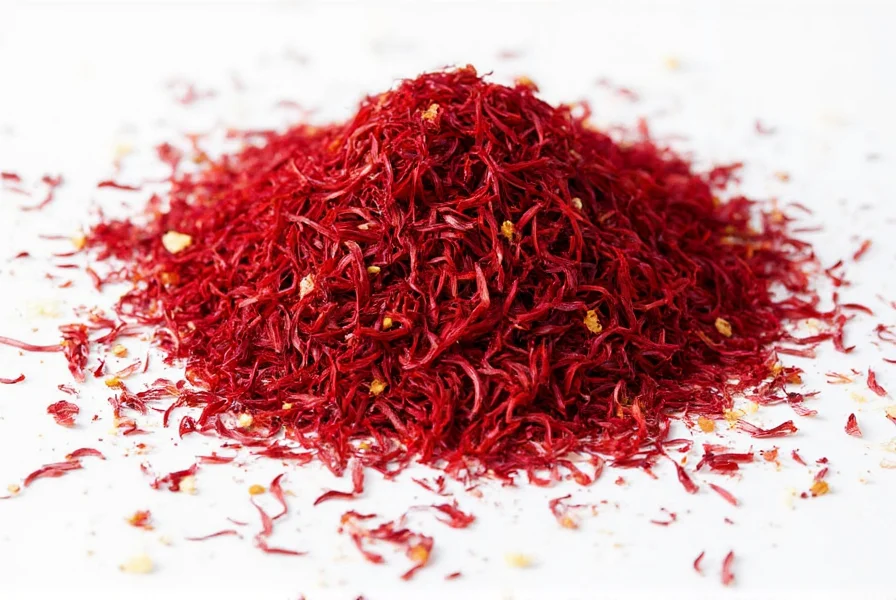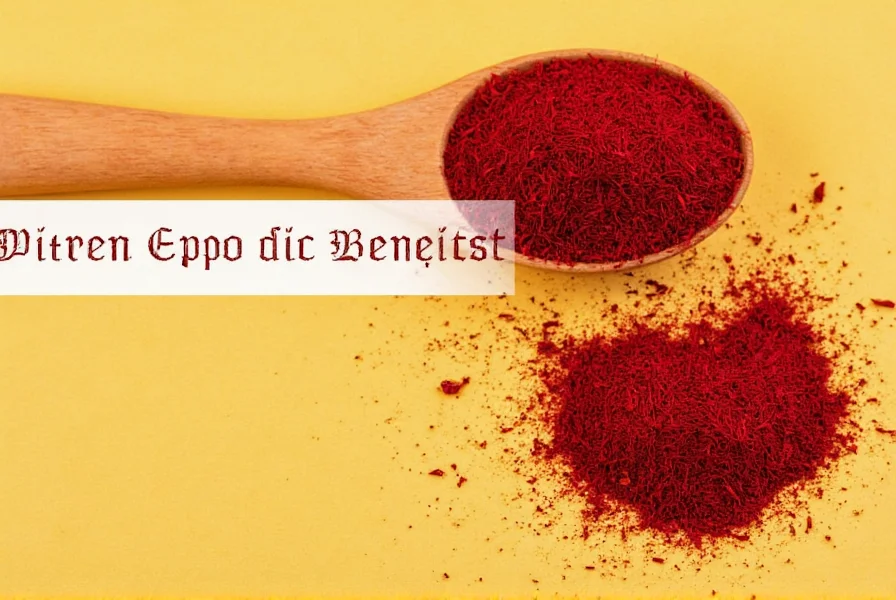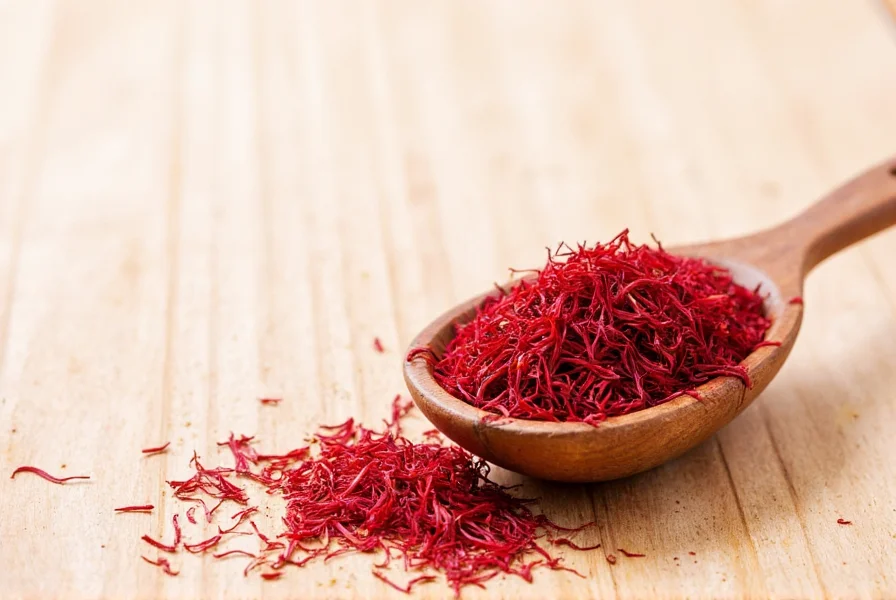Understanding Saffron Extract: Science and Applications
Saffron extract represents one of the most researched natural supplements in contemporary nutraceutical science. Unlike culinary saffron spice, which requires significant quantities for therapeutic effects, standardized extracts deliver concentrated bioactive compounds in practical dosages. This distinction makes saffron extract particularly valuable for researchers and health-conscious consumers seeking evidence-based natural interventions.
What Exactly Is Saffron Extract?
Saffron extract comes from the dried stigmas of the Crocus sativus flower, commonly known as saffron crocus. The extraction process concentrates key bioactive compounds including:
- Crocin - The primary carotenoid responsible for saffron's red color and significant antioxidant properties
- Safranal - The compound contributing to saffron's distinctive aroma and neurological effects
- Picrocrocin - A precursor to safranal that contributes to saffron's bitter taste
Modern extraction techniques produce standardized supplements containing specific percentages of these compounds, typically 2-8% safranal and 1.5-3% crocin, ensuring consistent potency across batches. This standardization addresses the variability inherent in raw saffron spice, where active compound concentrations fluctuate based on growing conditions and processing methods.

Evidence-Based Health Benefits of Saffron Extract
Unlike many herbal supplements with limited research, saffron extract benefits have been investigated in numerous clinical trials with promising results across several health domains.
Mood Enhancement and Depression Support
Multiple randomized controlled trials demonstrate saffron extract's potential for improving mood. A comprehensive 2020 meta-analysis published in Phytomedicine reviewed 10 clinical studies involving 762 participants. The analysis concluded that saffron extract (typically 30 mg daily of standardized extract) showed comparable efficacy to conventional antidepressants like fluoxetine and imipramine for mild-to-moderate depression, with fewer reported side effects.
The mechanism appears related to safranal's modulation of serotonin, dopamine, and norepinephrine systems. Unlike pharmaceutical antidepressants that often target single pathways, saffron extract's multi-compound profile may provide broader neurotransmitter support. Research on saffron extract for depression continues to grow, with recent studies exploring its potential as an adjunct therapy for treatment-resistant depression.
Eye Health and Age-Related Vision Support
Crocin's potent antioxidant properties show particular promise for ocular health. Italian researchers conducted a 3-month study with 29 adults experiencing early age-related macular degeneration. Participants taking 20 mg daily of saffron extract demonstrated measurable improvements in retinal function compared to placebo.
Additional research suggests saffron extract may protect photoreceptor cells from light-induced damage and improve blood flow to the retina. While not a replacement for conventional eye care, these findings position saffron extract as a promising complementary approach for maintaining visual function during aging.
| Health Application | Effective Dosage Range | Key Compounds Involved | Research Status |
|---|---|---|---|
| Mood support | 15-30 mg daily | Safranal, crocin | Multiple RCTs, meta-analyses |
| Appetite control | 17.5-30 mg daily | Safranal | Several clinical trials |
| Eye health | 20 mg daily | Crocin | Promising early research |
| PMS symptom relief | 30 mg twice daily | Mixed compounds | Limited but positive studies |
Weight Management and Appetite Regulation
Emerging research on saffron extract for weight loss focuses on its potential to reduce snacking frequency and emotional eating. A double-blind, placebo-controlled study published in Nutrition Research followed 60 overweight women for 8 weeks. Those taking 17.5 mg of saffron extract twice daily reported 55% less snacking frequency and lost significantly more weight than the placebo group.
The proposed mechanism involves safranal's influence on serotonin pathways that regulate satiety and emotional eating patterns. Unlike stimulant-based weight loss supplements, saffron extract appears to work through mood and appetite modulation rather than metabolic acceleration, potentially offering a gentler approach with fewer side effects.
Mechanisms of Action: How Saffron Extract Works
The therapeutic effects of saffron extract stem from multiple biological pathways:
- Neurotransmitter modulation - Safranal inhibits serotonin reuptake and may influence dopamine and norepinephrine systems
- Antioxidant activity - Crocin demonstrates potent free radical scavenging, particularly protecting neural and retinal tissues
- Anti-inflammatory effects - Multiple compounds in saffron extract reduce inflammatory markers like TNF-α and IL-6
- Hormonal regulation - Emerging evidence suggests influence on cortisol and other stress-related hormones
This multi-target approach explains why saffron extract shows promise across diverse health applications. Unlike single-compound pharmaceuticals, the synergistic action of saffron's various bioactive components may provide broader physiological support.
Safety Profile and Considerations for Saffron Extract Use
Saffron extract demonstrates a favorable safety profile at recommended dosages. Most clinical trials report minimal side effects, typically limited to mild gastrointestinal discomfort or headaches in a small percentage of users.
Important Safety Considerations
- Dosage limits - Doses exceeding 1.5 grams daily may cause serious adverse effects; therapeutic doses typically range from 15-30 mg
- Pregnancy concerns - High doses may stimulate uterine contractions; avoid medicinal amounts during pregnancy
- Medication interactions - Potential interactions with antidepressants, blood pressure medications, and anticoagulants
- Allergic reactions - Rare but possible, particularly in individuals sensitive to related plants
Long-term safety data remains limited, as most clinical trials span 8-12 weeks. Individuals with bipolar disorder should consult healthcare providers before use, as mood-stabilizing effects could potentially trigger manic episodes in susceptible individuals.

Quality Assessment: Identifying Effective Saffron Extract Products
Not all saffron extracts deliver equivalent benefits. Key quality indicators include:
- Standardization - Look for products specifying crocin (1.5-3%) and safranal (2-8%) content
- Third-party testing - Certifications from organizations like USP, NSF, or ConsumerLab verify potency and purity
- Extraction method - Water or ethanol-based extractions preserve bioactive compounds better than chemical solvents
- Transparency - Reputable manufacturers provide detailed information about sourcing and testing
Be cautious of products making exaggerated claims or lacking ingredient transparency. The presence of fillers like maltodextrin or unnecessary additives may reduce effectiveness. When evaluating saffron extract for depression or other specific applications, ensure the product matches the formulations used in relevant clinical research.
Current Research Limitations and Future Directions
While promising, saffron extract research has limitations worth noting:
- Many studies have relatively small sample sizes
- Long-term efficacy and safety data beyond 6 months remains limited
- Optimal dosing may vary based on specific health applications
- Individual responses show considerable variability
Future research directions include larger multi-center trials, investigation of saffron extract's potential in neurological conditions like Alzheimer's disease, and exploration of synergistic effects with other evidence-based interventions. As analytical techniques improve, researchers are also developing more precise methods to characterize saffron's complex phytochemical profile.
Conclusion: A Balanced Perspective on Saffron Extract
Saffron extract represents one of the better-researched natural supplements with multiple potential health applications. Current evidence particularly supports its use for mood support, with growing research in eye health and weight management. When selecting a product, prioritize standardized extracts from reputable sources that match the formulations used in clinical research.
As with any supplement, individual results may vary, and saffron extract should complement rather than replace conventional medical care for diagnosed conditions. Consultation with healthcare providers remains essential, particularly for individuals with existing health conditions or those taking medications. The evolving research landscape suggests saffron extract will continue to be an important subject of scientific investigation in the coming years.
Frequently Asked Questions
What is the difference between saffron spice and saffron extract?
Saffron spice consists of the dried stigmas of the Crocus sativus flower used in cooking, while saffron extract is a concentrated supplement form. Extracts contain standardized levels of active compounds (typically 15-30 mg delivers what would require 1.5 grams of spice), making therapeutic dosing practical. The extraction process isolates and concentrates key bioactive components like crocin and safranal that would be difficult to obtain through culinary use alone.
How long does it take for saffron extract to work for depression?
Clinical studies on saffron extract for depression typically show measurable improvements within 4-6 weeks of consistent daily use at 15-30 mg of standardized extract. Some participants report subtle mood improvements within the first 1-2 weeks, but maximum benefits generally require 8 weeks of continuous use. This timeline aligns with conventional antidepressants, though saffron extract often demonstrates fewer initial side effects.
Can I take saffron extract with my antidepressant medication?
Consult your healthcare provider before combining saffron extract with antidepressant medications. While some studies show saffron extract can be safely used alongside SSRIs, potential interactions exist due to shared mechanisms of action on serotonin pathways. Your provider can help determine appropriate timing and dosing to minimize any risk of serotonin syndrome while maximizing potential benefits.
Does saffron extract help with weight loss?
Research suggests saffron extract may support weight management primarily through appetite regulation rather than metabolic changes. Clinical trials show it can reduce snacking frequency by approximately 50% and decrease emotional eating. A typical effective dose for appetite control is 17.5-30 mg daily. While not a standalone weight loss solution, it may complement dietary and lifestyle approaches for individuals struggling with emotional eating patterns.
What are the potential side effects of saffron extract?
At recommended doses (15-30 mg daily), saffron extract generally causes minimal side effects. Some users report mild digestive discomfort, dry mouth, or headaches. Higher doses (exceeding 1.5 grams) can cause serious adverse effects including dizziness, nausea, and in extreme cases, uterine bleeding or allergic reactions. Individuals with bipolar disorder should use caution as it may potentially trigger manic episodes. Always consult a healthcare provider before starting any new supplement regimen.











 浙公网安备
33010002000092号
浙公网安备
33010002000092号 浙B2-20120091-4
浙B2-20120091-4